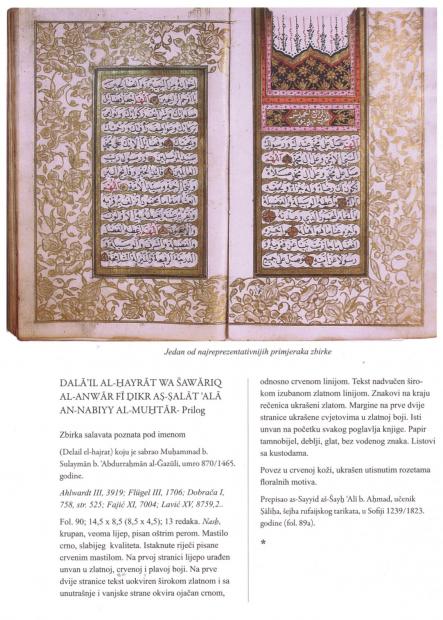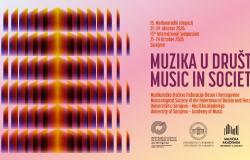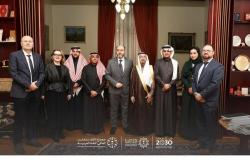Special collections from the National and University Library of BiH declared a national monument of Bosnia and Herzegovina

At its 35th session, held on 2 July 2020 in Sarajevo, the Commission for Preserving National Monuments adopted a decision to designate the Special Collection of the National and University Library of Bosnia and Herzegovina as a National Monument of BiH. The decision to declare the movable property was made by a commission composed of: the chairman Radoje Vidović and members Goran Milojević and Prof. Dr. Amir Pašić. In addition to members of the Commission to Preserve National Monuments, representatives of the international community also attended the session.
The National and University Library of Bosnia and Herzegovina inherits a treasure that testifies to the past of our country and the people who live in it. This treasure is our legacy from the past, what we live today, and what we must pass on and leave to future generations. The treasure of NUBBiH is an irreplaceable source and witness of past times and inspiration for further life, work and progress.
Special collections consist of five sub-collections:
• Collection of old and rare books,
• Manuscript Collection and Archive,
• Cartographic collection,
• Graphic collection and
• Music collection (The music collection was completely destroyed in '92 war. The cartographic and graphic collection also suffered heavy losses. Reconstruction of all collections is underway)
The Department of Old and Rare Books and Manuscripts was formed in 1951. The greatest value is occupied by the first printed books, the incunabula, of which the Library has four. They were printed in Venice and Tübingen. Incunables are a highly valued cultural treasure for European history, and not just spiritual ones. The period of the 17th and 18th centuries was marked, among other things, by books by Bosnian Franciscans, among which we especially emphasize the works of Matija Divković printed in Bosnian. Matija Divković printed his first book, Christian Doctrine, in Venice back in 1611. There are also numerous works by Ivan Ančić, Stjepan Margetić, Pavle Posilović, Ivan Bandulović, Tomo Babić, Jerolim Filipović, Marko Dobretić, and others.
For the Bosnian-Herzegovinian printed book, the 19th century represents the time of its birth. So today, the Library has publications printed in Sopron's printing house, Vilajetska printing house in Sarajevo, Franjo Milićević Printing House in Mostar, etc. The Vilayet printing house published all the letters that were used in this area at that time. Publications from this period are very important for our cultural and historical heritage.
The twentieth century was represented in the collection of rarities by various bibliophilic editions, from facsimiles of the most valuable rarity of world importance, original small-circulation works, to mini-books and the like.
Until the end of the 19th century, our region was dominated by manuscripts and manuscripts. We divide this collection into Manuscript and Archival.
The manuscript collection has about a thousand codices written mainly in Oriental languages, Arabic, Turkish, Persian, and a small number in Latin and Greek and the languages of our peoples. In addition to the Arabic alphabet, Latin, Old Church Cyrillic, Bosnian and Arabic are represented.
Within the Manuscript Collection is the Archive Collection, which consists of several thematic units such as the archive of Mehmed-beg Kapetanović Ljubušak, dr. Jovan Kršić, cultural and educational societies Napredak and Prosvjeta, and about 300 documents of the Poljica Republic written in Bosnian.
In the Cartographic Collection, we pay special attention to the national fund, ie. maps showing Bosnia and Herzegovina. The fund of the Cartographic Collection includes all types of maps (from the 16th to the 21st centuries), atlases and tourist guides, reference literature. The largest part of the fund consists of maps of the countries of Southeast and Southern Europe, and most of them are maps of Yugoslavia, Bosnia and Herzegovina and neighboring countries.
The graphic collection collects, processes, stores and makes available for use: posters, calendars, postcards, graphic maps, exhibition catalogs, photographs of celebrities, portraits and other non-book material and reference literature in the field of art. The collection includes a portrait of Mehmed-beg Kapetanović Ljubušak (Sarajevo mayor and lexicographer), oil paintings by Roman Pertović, and Safet Krupić Landscape from the Una, graphic maps with works by Bosnian-Herzegovinian graphic artists, etc., old postcards of Sarajevo and cultural and historical monuments (Austro-Hungarian period), and other cities in Bosnia and Herzegovina.
We are much honored that the Commission has recognized the importance and value of the material we inherit, and we believe that it is necessary to establish a management and protection plan as soon as possible with adequate and professional assistance.
At its 35th session, held on 2 July 2020 in Sarajevo, the Commission for Preserving National Monuments adopted a decision to designate the Special Collection of the National and University Library of Bosnia and Herzegovina as a National Monument of BiH. The decision to declare the movable property was made by a commission composed of: the chairman Radoje Vidović and members Goran Milojević and Prof. Dr. Amir Pašić. In addition to members of the Commission to Preserve National Monuments, representatives of the international community also attended the session.
The National and University Library of Bosnia and Herzegovina inherits a treasure that testifies to the past of our country and the people who live in it. This treasure is our legacy from the past, what we live today, and what we must pass on and leave to future generations. The treasure of NUBBiH is an irreplaceable source and witness of past times and inspiration for further life, work and progress.
Special collections consist of five sub-collections:
• Collection of old and rare books,
• Manuscript Collection and Archive,
• Cartographic collection,
• Graphic collection and
• Music collection (The music collection was completely destroyed in '92 war. The cartographic and graphic collection also suffered heavy losses. Reconstruction of all collections is underway)
The Department of Old and Rare Books and Manuscripts was formed in 1951. The greatest value is occupied by the first printed books, the incunabula, of which the Library has four. They were printed in Venice and Tübingen. Incunables are a highly valued cultural treasure for European history, and not just spiritual ones. The period of the 17th and 18th centuries was marked, among other things, by books by Bosnian Franciscans, among which we especially emphasize the works of Matija Divković printed in Bosnian. Matija Divković printed his first book, Christian Doctrine, in Venice back in 1611. There are also numerous works by Ivan Ančić, Stjepan Margetić, Pavle Posilović, Ivan Bandulović, Tomo Babić, Jerolim Filipović, Marko Dobretić, and others.
For the Bosnian-Herzegovinian printed book, the 19th century represents the time of its birth. So today, the Library has publications printed in Sopron's printing house, Vilajetska printing house in Sarajevo, Franjo Milićević Printing House in Mostar, etc. The Vilayet printing house published all the letters that were used in this area at that time. Publications from this period are very important for our cultural and historical heritage.
The twentieth century was represented in the collection of rarities by various bibliophilic editions, from facsimiles of the most valuable rarity of world importance, original small-circulation works, to mini-books and the like.
Until the end of the 19th century, our region was dominated by manuscripts and manuscripts. We divide this collection into Manuscript and Archival.
The manuscript collection has about a thousand codices written mainly in Oriental languages, Arabic, Turkish, Persian, and a small number in Latin and Greek and the languages of our peoples. In addition to the Arabic alphabet, Latin, Old Church Cyrillic, Bosnian and Arabic are represented.
Within the Manuscript Collection is the Archive Collection, which consists of several thematic units such as the archive of Mehmed-beg Kapetanović Ljubušak, dr. Jovan Kršić, cultural and educational societies Napredak and Prosvjeta, and about 300 documents of the Poljica Republic written in Bosnian.
In the Cartographic Collection, we pay special attention to the national fund, ie. maps showing Bosnia and Herzegovina. The fund of the Cartographic Collection includes all types of maps (from the 16th to the 21st centuries), atlases and tourist guides, reference literature. The largest part of the fund consists of maps of the countries of Southeast and Southern Europe, and most of them are maps of Yugoslavia, Bosnia and Herzegovina and neighboring countries.
The graphic collection collects, processes, stores and makes available for use: posters, calendars, postcards, graphic maps, exhibition catalogs, photographs of celebrities, portraits and other non-book material and reference literature in the field of art. The collection includes a portrait of Mehmed-beg Kapetanović Ljubušak (Sarajevo mayor and lexicographer), oil paintings by Roman Pertović, and Safet Krupić Landscape from the Una, graphic maps with works by Bosnian-Herzegovinian graphic artists, etc., old postcards of Sarajevo and cultural and historical monuments (Austro-Hungarian period), and other cities in Bosnia and Herzegovina.
We are much honored that the Commission has recognized the importance and value of the material we inherit, and we believe that it is necessary to establish a management and protection plan as soon as possible with adequate and professional assistance.







